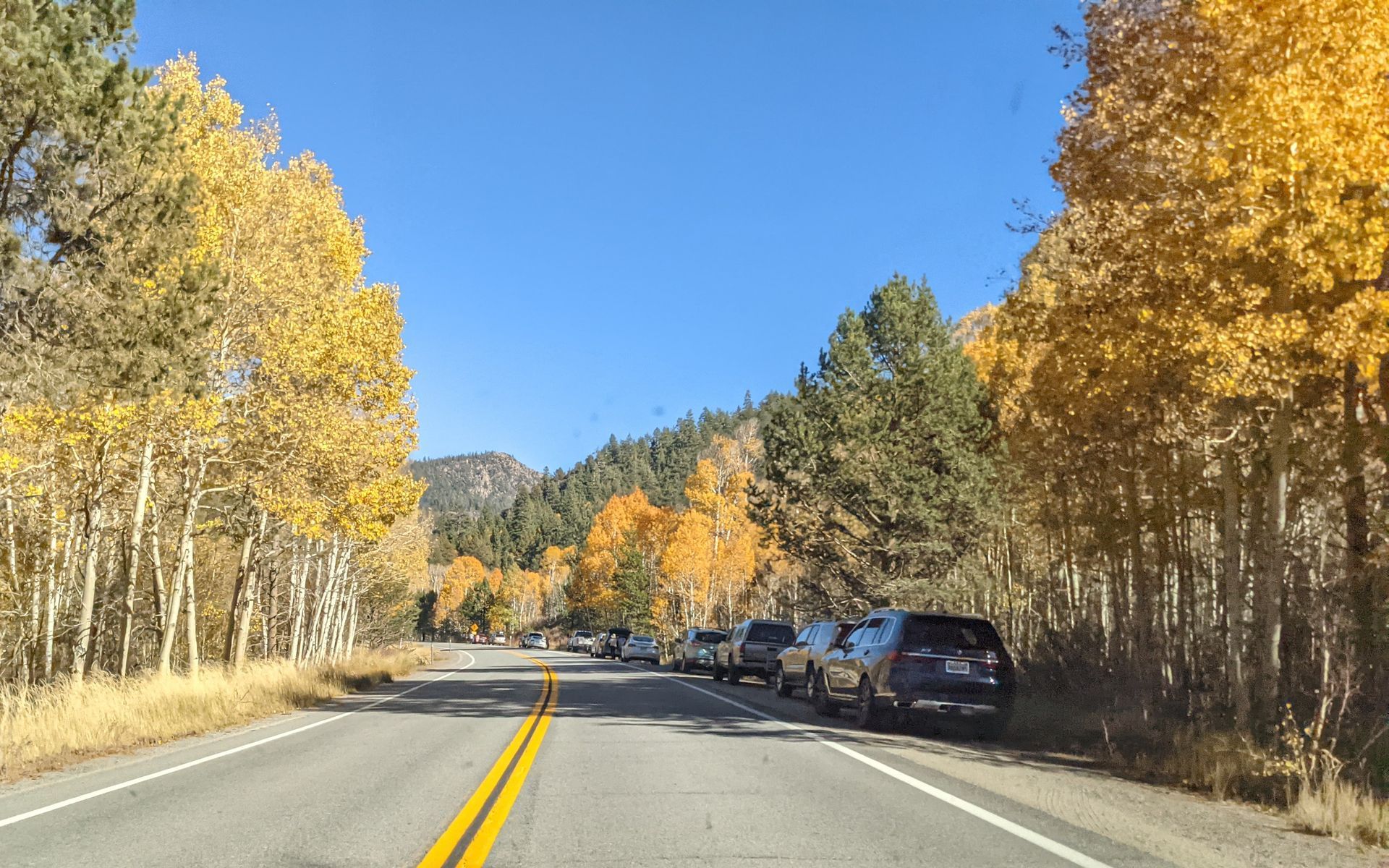Tuleyome's Science Corner - Where are the Fall Colors?

Mostly brown and yellow foliage on blue oaks along the Cache Creek Ridge trail
Growing up in upstate New York, I always looked forward to fall foliage season, when the hills would be aflame with deep reds, glowing oranges, and vibrant yellows. After moving to the Sacramento area almost 15 years ago, I was disappointed by the relative lack of fall color in the wilderness areas on either side of the central valley.
To understand what makes our area so different from New England in terms of fall foliage, we need to start by understanding why leaves change color. Broad-leafed plants that evolved in areas with cold winters typically lose their leaves in the fall in preparation for winter dormancy. As part of this process, the pigments in leaves are broken down and recycled, which causes changes in leaf color.
The primary pigment in a green leaf is chlorophyll, which is the key player in converting solar energy into chemical energy in the plant’s cells. Throughout the growing season, chlorophyll is joined by a variety of other pigments, including yellow and orange xanthophylls, which contribute to capturing light energy and also help reduce damage from excess light.
Once the daylength hits a certain threshold in the fall, the plant will stop sending resources into its leaves. It will then begin breaking down the components of the leaf cells, so that they can be stored in the roots and reused in the spring. One of the first things to be broken down are the chlorophyll molecules – this causes the leaf to lose its green color and exposes any other pigments that are present, such as the yellow and orange xanthophylls.
In places with cold, sunny fall days, many species will produce red anthocyanin pigments after the chlorophyll has been broken down. Recent studies have shown that these anthocyanins help protect leaves from oxidative damage that can occur at low temperatures and high light. Reducing this oxidative damage is important for ensuring that the plant can recycle as much as possible from each leaf. These anthocyanins are the cause of the brilliant red foliage common to many tree species from the Northeast.

Aspens with yellow foliage in Hope Valley along the Carson Pass Highway
In the foothills of the central valley, cold temperatures are rare in the autumn, meaning that there is less benefit for plants to produce anthocyanins as part of the normal leaf breakdown process. Additionally, many of the most common tree species in the foothills are not fall-deciduous species – these include evergreen species such as live oaks and conifers, as well as the drought deciduous blue oak, which may lose its leaves during the summer months in dry years or retain them through winter in wet years. In oaks, the evergreen growth habit is particularly beneficial, because it allows them to do photosynthesis throughout the relatively mild and wet winters and then reduce growth to conserve water in the hot, dry summer.
In summary then, the two main reasons for our relative lack of fall foliage are mild fall temperatures and selective pressure for adaptations to California’s dry environment. The good news though is that you can still see stunning fall foliage in California – you’ll just need to drive up to higher elevations. I particularly enjoy the Hope Valley area south of Lake Tahoe and recommend checking the California Fall Color website to time your trip to hit peak foliage.
-Geoff Benn (gbenn@tuleyome.org)
Education Associate
About Geoffrey Benn
Geoff is Tuleyome's Education Associate. He has a Ph.D. in Plant Biology and previously taught introductory biology at UC Davis and American River College.
RECENT ARTICLES






